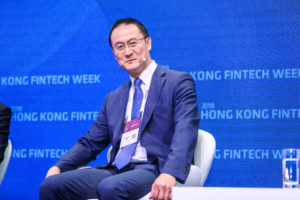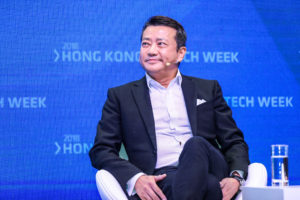Hong Kong’s insurance sector should speed up to embrace new technology
The Hong Kong insurance sector has a business model heavily relying on agents and has been slow to adopt digital technology compared with its counterparts in other regions, say an industry regulator and some insiders.
Nonetheless the introduction of InsurTech (insurance technology) is inevitable and the sector needs to step up its work to embrace this trend. That was a consensus view expressed across two panel sessions at this year’s Hong Kong FinTech Week held at the Hong Kong Convention and Exhibition Centre.
“We have to look at the market landscape of Hong Kong: we have close to 160 insurance companies, including 60 life [insurance] companies, most of which heavily relying on the agency model,” said Raymond Tam, Executive Director (Policy and Development) of the Insurance Authority of Hong Kong, during one of the panel sessions.

“Hong Kong is not a big place… but we have about 100,000 insurance intermediaries, such as agents and brokers,” he pointed out. It was “understandable” that the traditional insurance providers preferred the status quo, “but the world is changing: if you stand still, you will be overtaken,” suggested the regulator.
Mr Tam acknowledged one of the biggest tasks for his body at the moment was to help local insurance companies to change their thinking and embrace technology, thus ensuring the continued competitiveness of the local sector.
The Insurance Authority has set up what it calls a “Future Task Force”, consisting of experts and professionals from the insurance industry and from academia. It has several working groups to identify future trends shaping the industry, including one looking at technology.
That working group provided “a focal point for [technology] start-up companies to share their ideas with the insurance industry”, thus “encouraging partnership” in developing new products and services, the regulator’s executive director noted.
The authority launched in September an “InsurTech Sandbox” to support pilot versions of InsurTech software applications by authorised insurers. “This also encourages cooperation between the start-ups and insurance companies,” Mr Tam noted.
Make impossible possible
“Now we’re in the FinTech era and I believe AI [artificial intelligence] will bring the biggest change to the industry,” Mr Tam remarked. “It will not only change the way the [insurers] approach the customers but also change the way of pricing, underwriting and the back-office processing,” of insurance products, he suggested.
Another panel speaker was Charles Hung, Chief Executive Officer of Blue, a Hong Kong digital insurance joint venture owned by Aviva Plc, Hillhouse Capital and Chinese digital service provider Tencent Holdings Ltd.

Mr Hung agreed on the urgency for Hong Kong insurers to adopt fresh technology. “The insurance industry has been behind the curve when it comes to technology and there are quite a lot of catch-ups” required, he said.
The Blue executive also advised the incumbent insurance companies to think clearly when seeking out technology firms for collaboration.
“Adopting InsurTech is more than just about technology integration: when you partner with somebody, it is more than just the pure asset and commodity integration,” Mr Hung said. “It’s also about people integration and culture integration: I think that’s one of the key challenges [for insurers] when it comes to partnering with InsurTech companies.”
Concerning the future of InsurTech, the executive highlighted two macro aspects. “The first one is utilising technology to better integrate with the customers’ ecosystem,” he said, referring first to how consumers access such services via digital technology. “The second big thing is utilising technology to empower the customers to be in control.”
He also addressed the importance of proper data access and usage by insurers, which could “make the impossible possible” and could create new, positive experiences and new services for customers.

‘Relatable’ services
Another InsurTech panel session heard from a representative of WeSure, a digital insurance platform. WeSure is owned by Tencent, which also controls WeChat, a social media system popular on the Chinese mainland.
Alan Lau, Chairman and CEO of WeSure, said 80 percent of its users were in the 25 to 40 age group. “They have not bought insurance products before and are price sensitive,” he said. “In order to appeal to this new growing segment, the old path doesn’t work and we could help traditional insurance companies to make their products much more affordable, fun to use and relatable as a service.”
Mr Lau said he believed there would be more partnerships in the market in the next few years between technology or InsurTech companies, and traditional insurers. This was because the new digital businesses were “offering new ways to reach users”.
WeSure now uses AI in two areas, namely supporting call centre work and fraud detection. It saved “a lot of costs” and reduced “headcount”, he said. “Understanding patterns” identified via AI “can give us red flags and we can understand when we need to investigate”.
Mr Lau stressed AI would not replace human input, just make faster the entire claim process. “For example, we now have 80 percent of people getting their payouts in a day,” he explained.